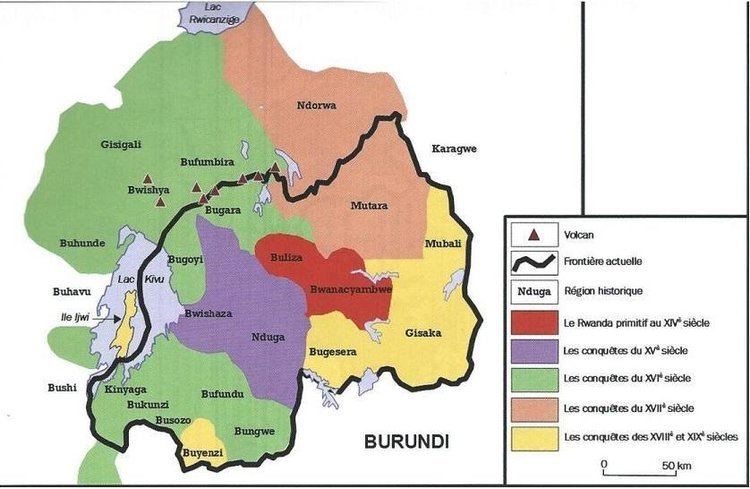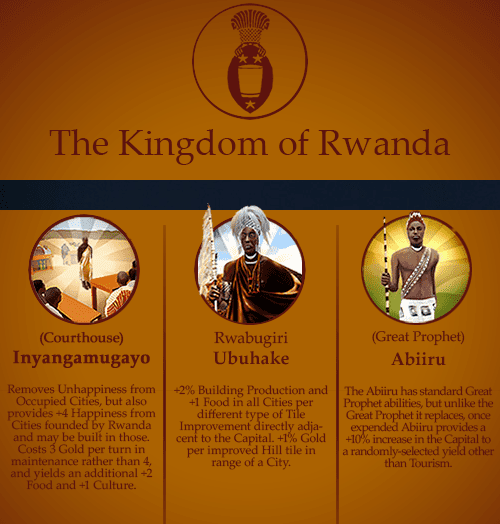Government Monarchy Date dissolved 1962 | Preceded by Succeeded by Founded 1959 Currency Rwandan franc | |
 | ||
1959–1961 Kigeli V (3rd Dyn.) (last) Similar Kingdom of Aksum, Kingdom of Bamum, Kingdom of Burundi | ||
Kingdom of rwanda it s connection with ancient egypt
The Kingdom of Rwanda was a pre-colonial kingdom in East Africa which survived with some of its autonomy intact under German and Belgian colonial rule until its monarchy was abolished in the Rwandan Revolution. After a 1961 referendum, Rwanda became a republic and received its independence in 1962.
Contents

Pre-colonization

In the 15th century, one chiefdom managed to incorporate several of its close neighbor territories establishing the Kingdom of Rwanda after disintegration of the Bunyoro-Kitara Empire(Bachwezi Empire), which ruled over most of what is now considered Rwanda, Burundi, Uganda,and parts of Tanzania. The Hutu majority, 82–85% of the population, were mostly peasants while the kings, known as Mwamis, were generally from Tutsi. Certainly some Hutus were nobility and, equally, considerable intermingling took place.
Before the 19th century, it was believed that the Tutsis held military leadership power while the Hutus possessed healing power and agricultural skills. In this capacity, the Mwami's council of advisors (abiiru) was exclusively Hutu and held significant sway. By the mid-18th century, however, the abiiru had become increasingly marginalized.
The position of Queen Mother was an important one, managing the royal household and being heavily involved in court politics. When their sons ascended to the throne, mothers would take a new name. This would be composed of nyira-, meaning "mother of", followed by, usually, the regal name of the new king; only kings named Mutara do not follow this convention, their mothers taking the name Nyiramavugo (mother of good counsel).

As the kings centralized their power and authority, they distributed land among individuals rather than allowing it to be passed down through lineage groups, of which many hereditary chiefs had been Hutu. Most of the chiefs appointed by the Mwamis were Tutsi. The redistribution of land, enacted between 1860 and 1895 by Kigeli IV Rwabugiri, resulted in an imposed patronage system, under which appointed Tutsi chiefs demanded manual labor in return for the right of Hutus to occupy their land. This system left Hutus in a serf-like status with Tutsi chiefs as their feudal masters.
During the reign of Mwami Rwabugiri, Rwanda transformed into an expansionist state. Rwabugiri indiscriminately classified all conquered peoples as "Hutu" without considering their ethnic backgrounds, making "Hutu" a trans-ethnic label linked to subordination. This approach not only further marginalized Hutus in social and political spheres but also reinforced the notion that "Hutu" and "Tutsi" represented socioeconomic rather than ethnic differences. In fact, one could kwihutura, or “shed Hutuness”, by accumulating wealth and rising through the social hierarchy.
